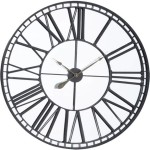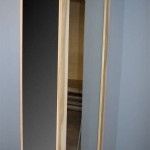How To Make Your Own Mirrors
Creating mirrors at home can be a rewarding project, allowing for customization of size and shape while offering a glimpse into the fascinating chemistry of silvering. This process involves applying a thin layer of reflective material to a suitable substrate, transforming ordinary glass into a functional mirror.
Essential Materials and Equipment
Several materials are necessary for successful mirror making. These include:
- Glass Sheet: The foundation of the mirror. Choose a thickness appropriate for the intended application.
- Distilled Water: Crucial for preparing the silvering solutions, as impurities in tap water can interfere with the chemical reactions.
- Silver Nitrate: The source of silver ions that form the reflective layer.
- Potassium Hydroxide: Used to adjust the pH of the solution and facilitate the silvering process.
- Glucose or Dextrose: Acts as a reducing agent, converting silver ions to metallic silver.
- Ammonium Hydroxide: Helps stabilize the silvering solution.
- Protective Gloves and Eyewear: Essential safety precautions when working with chemicals.
- Clean Containers: Glass or plastic containers for mixing solutions. Avoid metal containers as they can react with the chemicals.
- Spray Bottle or Cotton Balls: For applying the activator solution.
Preparing the Glass Surface
Proper preparation of the glass surface is critical for achieving a uniform and adherent reflective coating. This involves the following steps:
- Cleaning: Thoroughly clean the glass with soap and water to remove any dust, grease, or fingerprints.
- Rinsing: Rinse the glass with distilled water to eliminate any soap residue.
- Drying: Dry the glass completely with a lint-free cloth.
- Sensitizing: This step prepares the glass surface for accepting the silvering solution. It involves applying a solution of tin(II) chloride, which helps the silver adhere evenly.
Preparing the Silvering Solution
The silvering solution requires careful preparation to ensure the proper chemical reactions occur. The following steps outline the process:
- Solution A: Dissolve the silver nitrate in distilled water.
- Solution B: Dissolve the potassium hydroxide in distilled water.
- Solution C: Dissolve the glucose or dextrose in distilled water.
- Combining Solutions: Slowly add ammonium hydroxide to Solution A until the precipitate that initially forms dissolves. This creates a clear solution. Then, carefully add Solution B dropwise until a slight brownish precipitate persists. Finally, add more ammonium hydroxide until the solution clears again. This creates a sensitive silvering solution, ready to be activated.
Applying the Silvering Solution
Applying the silvering solution requires a controlled environment and careful technique:
- Mixing the Activator: Just before application, mix Solution C (glucose/dextrose solution) with the prepared silvering solution.
- Application: Immediately pour the combined solution onto the sensitized glass surface, ensuring it covers the entire area evenly. Alternatively, a spray bottle or cotton balls can be used for more intricate applications.
- Reaction Time: Allow the solution to react on the glass surface for several minutes. The silver will begin to deposit, forming the reflective layer.
Post-Silvering Treatment
Once the silvering process is complete, several post-treatment steps are necessary to protect the delicate silver layer:
- Rinsing: Gently rinse the mirrored surface with distilled water to remove any residual chemicals.
- Drying: Allow the mirror to dry completely in a dust-free environment.
- Protecting the Silver Layer: Apply a protective backing, such as paint or a specialized mirror backing compound, to shield the silver from oxidation and damage.
Safety Precautions
Working with chemicals requires strict adherence to safety guidelines:
- Gloves and Eyewear: Always wear protective gloves and eyewear to prevent chemical contact with skin and eyes.
- Ventilation: Ensure adequate ventilation in the working area to prevent the inhalation of chemical fumes.
- Disposal: Dispose of chemical waste responsibly according to local regulations.
- Research: Thoroughly research the properties and safety data sheets (SDS) of all chemicals used before beginning the process.
Troubleshooting Common Issues
Several factors can affect the quality of the finished mirror. Understanding common issues can help achieve optimal results:
- Uneven Coating: This can be caused by inadequate cleaning of the glass surface or uneven application of the silvering solution.
- Spotting or Blotching: Impurities in the distilled water or contamination of the solutions can lead to spotting or blotching.
- Poor Adhesion: Inadequate sensitizing of the glass surface can result in poor adhesion of the silver layer.

How To Make A Mirror With Pictures Wikihow

How To Make A Mirror With Pictures Wikihow

How To Make A Mirror With Pictures Wikihow

How To Make Mirrors By Silvering Glass 8 Steps With Pictures

How Are Mirrors Made And To Make One At Home Metal Men Recycling
:max_bytes(150000):strip_icc()/kaylasimonehome-905941da7dd04a08af07c415df2a1fd8.jpeg?strip=all)
20 Diy Mirror Frame Ideas To Inspire Your Next Project
:max_bytes(150000):strip_icc()/alahome1-a879d69e31be4a9a9ae522028c12926d.jpg?strip=all)
20 Diy Mirror Frame Ideas To Inspire Your Next Project

30 Diy Mirror Projects That Are Fun And Easy To Make

How To Antique A Mirror Tutorial Jenna Sue Design

How To Build Large Floor Leaner Mirror Sawdust 2 Stitches








